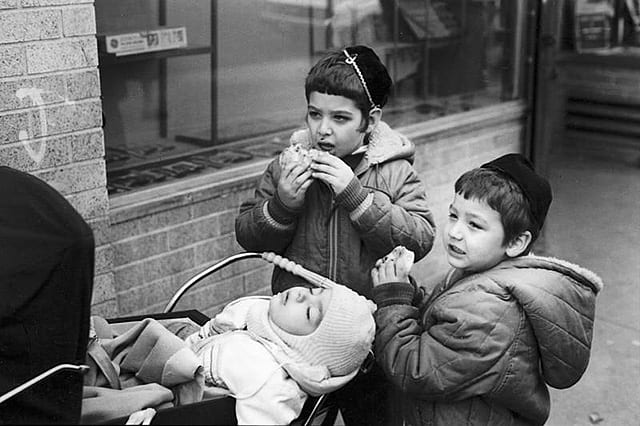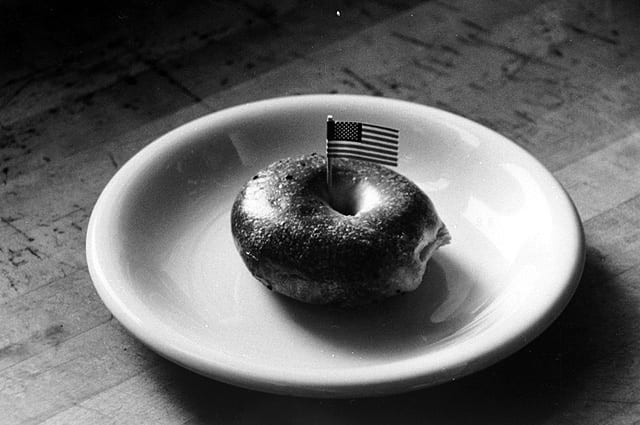By: Itamar Kremer
What would you say is the most Jewish food? Well, this is a tough one. For some, there is nothing on earth like grandma Genia’s Gefilte Fish, for others, it’s grandpa Ezra’s Kibbeh, yet others will swear by aunt Margalit’s Kubaneh, whereas if you ask Israeli young kids, they will probably rule that Bamba rules.
However, for members of the second-largest Jewish community in the world – the Jewry of the United States – there is no argument that bagel was, is, and shall ever be the most Jewish food. How did it win the title? Well, like many other Jewish stories – it is a long one, so bear with us.

September 1683 marked the beginning of the downfall of the Ottoman Empire. Centuries of powerful regime were about to end as the empire was defeated in the Vienna battle, after which the Ottomans lost large territories to the Holy Roman Empire and its allies. Other crucial outcomes of the battle were the introducing of black coffee in Europe as a war trophy, the invention of the croissant that represented the Turkish crescent-shaped symbol. Another culinary side effect of those historical shifts concerns us Jews.
After the Ottomans entered the sieged city of Vienna and almost demolished it, the Polish King Jan III Sobieski then flanked the city, riding a white horse, leading his troops and instigating complete chaos among the Ottomans, chasing them away. According to the legend, one Jewish Austrian baker approached the tired king during his victory march through the street of Vienna and offered him a round pastry that he invented especially for the glorious king.
The baker even had a new name for his invention: Bügel, which means stirrup – that ring horse riders put their feet in – in Austrian German. The gimmick was you could tie together a few bagels with the reins, thus easily enjoy a nice bite while riding. In fact, the bagel was developed a few decades earlier as a Jewish filling food with a shape symbolizing continuity, but come on, doesn’t the story of the Polish King sound so much better?
From that point onward, the bagel went on rolling, you couldn’t stop it. It soon became a Jewish symbol anywhere.

Bagel is basically a generic food – highly packed, un-fluffed dough, cooked in boiled sugary water, then baked in high temperature. The outcome is crispy on the outside, chewy, doughy from the inside. From a Jewish point of view, the bagel’s advantage is that you can prepare a bunch of them ahead, before the Shabbat, and put them in the oven as the Shabbat exits, to enjoy warm delicious bread, just half an hour after Havdala. Then you cut it in half, apply some cream cheese and a nice piece of lox, and there it is – the ultimate American Jewish breakfast. Add a pinch of guilt, a handful of Woodie Allen’s Jewish moms, and one Seinfeld’s punch.
How did this delicacy end up in the Goldene Medina, the United States? Bear with us some more.
Between 1881 and 1924, some 2.1 million Jews arrived in America from eastern Europe. That’s almost 20 times the first, second and third aliot to Israel in total. Naturally, this mass included expert bakers, who founded in 1907 the Bagel Baker’s guild of Manhattan – a voluntary union that was authorized to determine exact bagel standards, for example, weight between 57 to 85 gr., and the exact type and amount of ingredients. All 36 bakeries and 300 members agreed that new bagel shops could only be established by descendants of members of the bagel union, forever. In 1951 the union demonstrated its force and managed to shut down 32 bakeries, which resulted in a severe shortage of bagels, and respectively, a sharp drop in Salmon sales in New York. The bagel crisis was only resolved after 7 traumatic weeks, probably one of the most effective massive low carbs diet in the 20th century, matched only by the famous prohibition period.

The guild ceased to exist during the 1960s, when automatic bagel-making machines were introduced. Today you can find hot fresh bagels in every corner, usually twice as big as the old standard. Some shops sell the New York Bagel – stuffed with some nice Cheddar cheese, scrambled eggs and – don’t tell anyone! – a slice of fried bacon.
New York and Montreal hold a long time bagel rivalry. The Montreal Bagel has a similar shape, but it’s much sweeter, more condensed, and usually smaller than in New York. While in New York there’s many a trend of toasted bagels, Montrealers might consider this a total heresy. In the race to the moon, though, the Montreal Bagel has beat its New York opponent: in 2008, astronaut Gregory Chamitoff, son of Jewish parents from Russia, brought on board 18 kinds of Bagel with sesame, all the way to the moon from a bakery owned by his cousin.
At this point you must be hungry, so grab a flight to New York, take a cab to the 2nd and 81st, enter H&H and say we sent you. The owner is, off course, Puerto Rican.